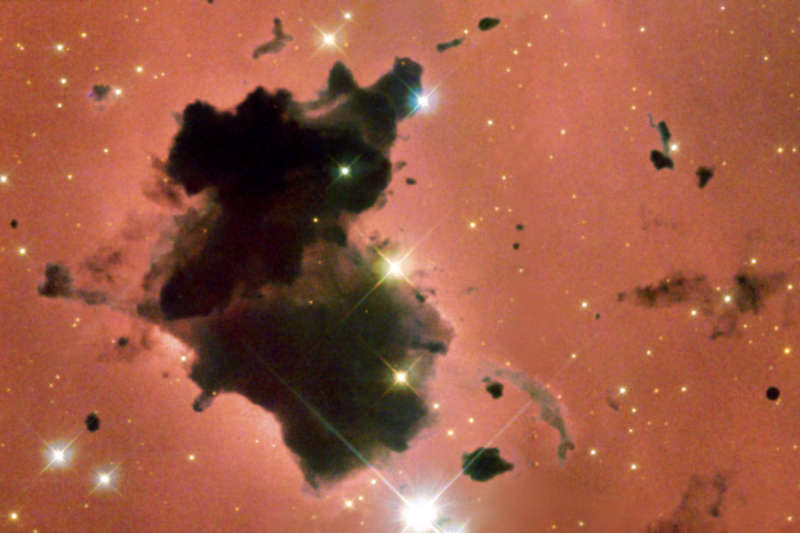
|
Explanation: Rich star fields and glowing hydrogen gas silhouette dense, opaque clouds of interstellar gas and dust in this Hubble Space Telescope close-up of IC 2944, a bright star forming region in Centaurus, 5,900 light-years away. The largest of these dark globules, first spotted by South African astronomer A. D. Thackeray in 1950, is likely two separate but overlapping clouds, each more than one light-year wide. Combined the clouds contain material equivalent to about 15 times the mass of the Sun, but will they actually collapse to form massive stars? Along with other data, the sharp Hubble images indicate that Thackeray's globules are fractured and churning as a result of intense ultraviolet radiation from young, hot stars already energizing and heating the bright emission nebula. These and similar dark globules known to be associated with other star forming regions may ultimately be dissipated by their hostile environment -- like cosmic lumps of butter in a hot frying pan.
Note : APOD Editor to Speak in New York on Jan. 2
|
January February March April May June July August September October November December |
| ||||||||||||||||||||||||||||||||||||||||||||||||
NASA Web Site Statements, Warnings, and Disclaimers
NASA Official: Jay Norris. Specific rights apply.
A service of: LHEA at NASA / GSFC
& Michigan Tech. U.
Based on Astronomy Picture
Of the Day
Publications with keywords: molecular cloud - emission nebula
Publications with words: molecular cloud - emission nebula
See also:
- APOD: 2025 December 9 B The Heart of the Soul Nebula
- APOD: 2025 September 19 B The NGC 6914 Complex
- APOD: 2025 September 10 B The Great Lacerta Nebula
- APOD: 2025 July 21 B Cats Paw Nebula from Webb Space Telescope
- APOD: 2025 July 16 B The Rosette Nebula from DECam
- APOD: 2025 July 10 B Lynds Dark Nebula 1251
- APOD: 2025 July 5 B Ou4: The Giant Squid Nebula
